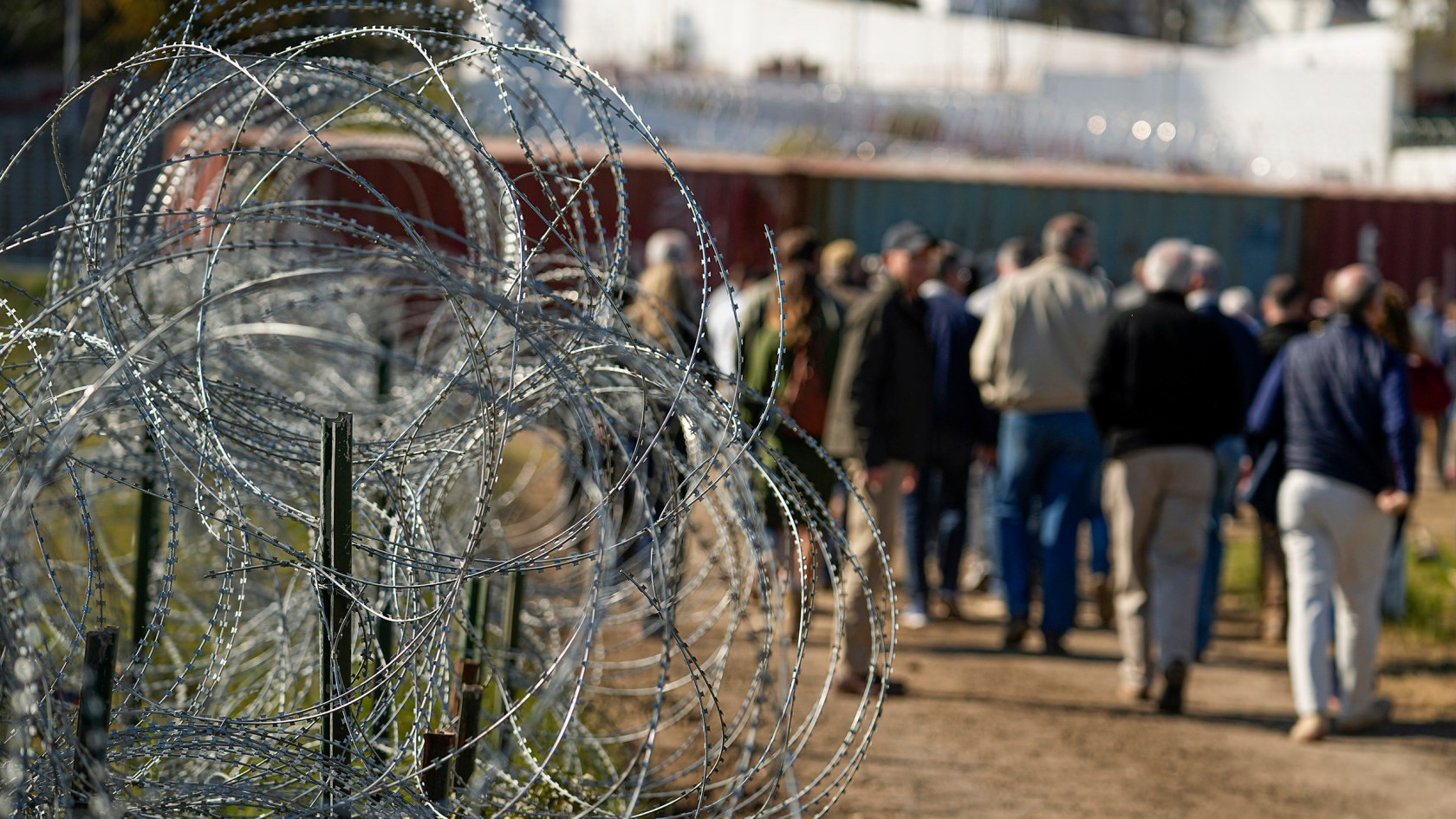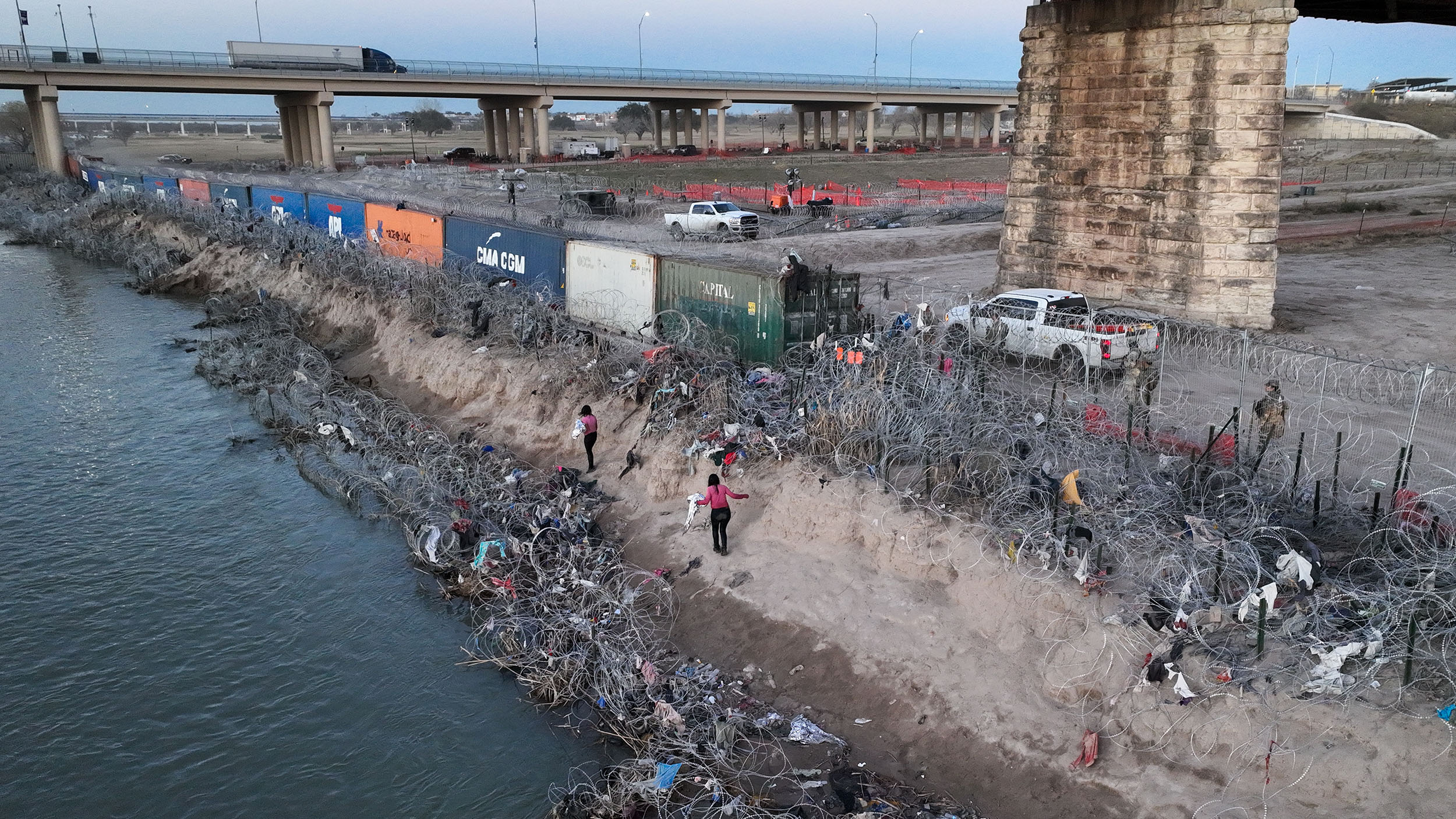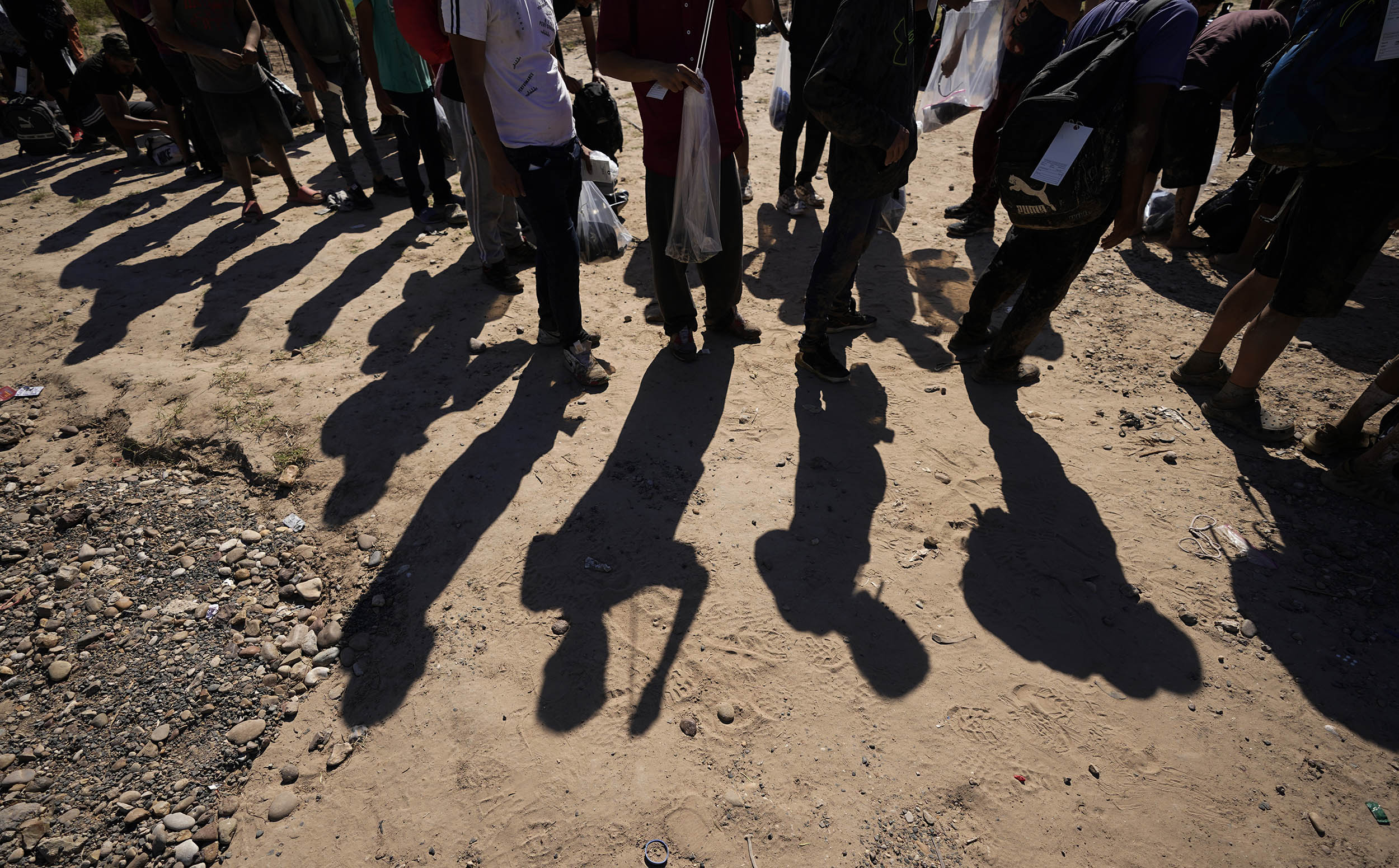Immigration roars back in headlines. Time finally come for reforms?

Members of Congress tour an area near the Mexican border in Texas.
AP Photo/Eric Gay
Migration law scholar looks at history, prospects for breaking gridlock in election year
A recent surge in migrants at the border coupled with the heated politics of a presidential election year have once again pushed the decades-old debate over comprehensive immigration reform to the top of the agenda in Washington.
Federal agents encountered more than 3 million migrants attempting to enter the U.S. in fiscal year 2023, with almost 2.5 million of them making their way through the southern border, marking a historic high.
In response, House Democrats and Republicans are negotiating a bipartisan border and immigration deal, which includes harsher border and asylum restrictions in exchange for new U.S. military aid for Ukraine.
If the deal, which currently has the support of President Biden, makes it through the Senate, it would be the biggest bipartisan shift in border and immigration laws since 1986, when Ronald Reagan signed a major overhaul bill.
To understand the roots of the gridlock and prospects for change, the Gazette spoke to Gerald L. Neuman, J. Sinclair Armstrong Professor of International, Foreign, and Comparative Law, and the director of the Human Rights Program at Harvard Law School. The interview has been edited for length and clarity.
The record number of migrants trying to enter the U.S. — more than 3 million “migrant encounters” in 2023 — has led to a humanitarian crisis. How did we end up there?
It’s important to mention that these encounters overstate the number of people involved. When agencies talk about “migrant encounters,” they include people who are found or sent back and who try again, which was especially common during the first part of 2023 — when Title 42, the U.S. COVID-19 border restriction, was being employed. I say this because there is a tendency to exaggerate the numbers to attract attention.
The current crisis indicates a cumulative backlog. Some of it goes all the way back to the Obama years, but it also reflects the chaos of the Trump years, with attempts to undermine asylum and the shutdown of the border during COVID. The COVID shutdown involved sending people back without even listening to their claims for protection. But the flows of migrants arise mainly from political instability, repression, gang violence, and economic disruption in their home countries.
What is necessary to happen for a comprehensive bipartisan plan?
I’m afraid that the parties need different incentives than they have now to cooperate and fix the things that are wrong with the immigration system. Presently, one party benefits from the claim that the system is broken and does not have an incentive to make it less divisive. I would not expect genuine wide-ranging bipartisan efforts to deal with the real problems very soon.
President Reagan signed in 1986 what some people call the last major immigration reform. Could you shed some light on the reasons for the lack of a comprehensive immigration reform in the past 40 years?
First, let me say that there hasn’t been a “comprehensive” immigration reform in the past few decades. Such a reform usually includes increases both in benefits and in enforcement measures. Or it could be comprehensive across numerous areas, like the bill that the Biden administration presented in 2021, which was a compiled wish list that had no realistic chance of being enacted but was indeed comprehensive.

President Reagan signs the Immigration Reform and Control Act of 1986.
Wikimedia Commons
The 1986 Act signed by Reagan was a trade of benefits and enforcement, and included legalization, strengthening of the border, and the final creation of employer sanctions. It wasn’t a fully comprehensive bill, but it was a compromise.
This was followed by the 1990 Immigration Act that was mostly on the benefit side, and then in 1996 by an act that was mostly on the enforcement side. But both were major compromise bills of a bipartisan nature.
We might, in fact, have gotten a new compromise at the beginning of George W. Bush’s term, but then came Sept. 11, which led to a major restructuring of the immigration agencies. And it’s since then that we’ve had difficulty getting real immigration reform.
From another perspective, the problem is the polarization of the electorate that was set off by Newt Gingrich in 1994, which then turned into intransigence against President Obama.
The gridlock we have over immigration is a result of a more general polarization in the political process, but immigration, since the advent of Trump, has become a factor that has amplified the polarization.

Migrants navigate barbed wire on the banks of the Rio Grande River in Eagle Pass, Texas.
Lokman Vural Elibol/Anadolu via Getty Images
What is a realistic approach to deal with the 11 million undocumented workers in the U.S.?
From a human rights perspective, one of the leading priorities is to legalize the long-term undocumented immigrants, especially the DACA recipients. And surely more than that, but not necessarily all 11 million because it may include some recent arrivals, who probably shouldn’t be included in the legalization program. On the other hand, a broad legalization may simply be more efficient.
What should be done about border security, enforcement, and the immigration court backlog?
In terms of enforcement, there is no easy solution. A border fence is merely a symbol and no solution. Clearly, the adjudication system needs more resources, and adjustments to improve both efficiency and fairness. For both sides, justice delayed is justice denied, and that should be an important part of the focus.
Another priority, contrary to some claims, is to reduce reliance on detention. The U.S. is engaged in arbitrary detention of migrants who really don’t need to be detained; they could be subject to surveillance.
The country should also respect its international obligations not to send people back to countries where they will be persecuted, tortured, or killed. It cannot suspend its international obligations on that front, and it should not openly violate them, as it did under COVID.

Migrants wait to be processed by the U.S. Customs and Border Patrol in Eagle Pass, Texas.
AP Photo/Eric Gay
What measures should be taken to reduce the flow of migrants into the U.S?
In terms of enforcement, the important point to stress is that this is not an issue that the U.S. can solve unilaterally. There must be a regional solution. It’s obvious to anyone who looks at the logistics of the problem that the solutions depend on cooperation with Mexico. Congress can’t just impose a solution and assume that Mexico will go along with it. More broadly, there are other countries that need to be involved in protecting refugees and in solving some of the problems that lead to migration.
Some experts say the asylum system is a parallel immigration system and that it should be revamped. What’s your take on this?
I’d like to use the term asylum broadly, not legalistically, to cover forms of protection from persecution, killing, and torture. The U.S. asylum system is too opaque and too inconsistent: Valid claims may be rejected, and claims that are made in perfectly good faith may turn out to be invalid.
On the other hand, some people seek desperately to come to the U.S. for reasons that are not covered by asylum, such as poverty, loss of livelihood, or to join family members. The system needs to winnow those claims out while remaining open to valid claims for protection. It would also benefit from greater clarity on which claims are valid, and from more consistent adjudication, but now, the system is not meeting its obligations to persecuted people.
Finally, what are your realistic hopes for changes in immigration policies?
For now, my hopes would be that any new legislation would increase funding and would help give the public the sense that the border situation is being addressed.
And meanwhile that the executive would use the authority that it already has to manage the situation better, including by negotiating with other countries. The executive should resist efforts that obstruct its compliance with its obligations.
There is danger that any new legislation would decrease protection, which would mean that we would be taking no steps forward, and several steps backward, and that nonetheless, issues about migration would remain just as divisive as they are now.




